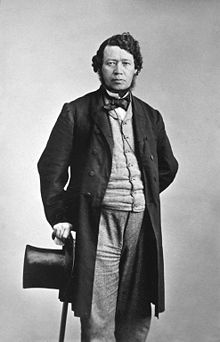A Brief History
On April 7, 1868, one year after he helped Canada achieve a measure of independence in the formation of the Canadian Confederation, Irish immigrant to the United States and then Canada, Thomas D’Arcy Etienne Grace Hughes McGee, was assassinated by Patrick J. Whelan, a Fenian Irish nationalist. McGee goes down in history as one of the Founding Fathers of Canada, what they call the Fathers of Confederation.
Digging Deeper
Ironically, McGee, born and raised in Ireland as a Catholic that hated the British rule over the Emerald Isle, fought against that British rule for Irish independence and sought to foment a “peasant revolution” against the British. Born in 1825, he was forced to flee Ireland by the age of 23 for the haven of the United States. Oddly enough, McGee actually became reversed in his reverence for democracy and republican ideals, finding himself disgusted by the United States and driven to ultra conservatist political and religious ideals.

In spite of his former hatred of the British and the Monarchy, McGee evolved into a staunch supporter of the Catholic Church and the Crown at the same time, a seemingly contradictory stance. As he became involved in Canadian politics and earning the title as “The First Canadian Nationalist,” McGee found himself at odds with the Fenian movement of Irish nationalists that sought the independence for Ireland that McGee once campaigned for.
McGee helped create Canada as an independent confederation within the British Commonwealth, closely aligned and allied with Britain. This strange flip flop in his politics would ultimately result in his date with destiny in 1868, when he walked back to his boarding house in Ottawa after midnight, after participating in a Parliamentary debate that went late. On his arrival, he opened his own door to be surprised by a gunman armed with a pistol that fired a fatal shot through the neck. Neighbors that rushed to the sound of the gunshot found McGee down and no assassin nearby.

McGee was given a state funeral the likes of which Canada has seldom seen. Buried in Montreal, his funeral procession drew an incredible crowd of 80,000 mourners in a city that only had a population of 105,000! (At the time, Canada, the second largest country in the world by size, had a population of only about 4 million people.) Despite the lack of eye witnesses, the government was able to arrest and convict Fenian sympathizer (use an “s” instead of a “z” for the proper Canadian/British spelling!) and Irish nationalist Patrick Whelan of the murder, though he may have only been one of a group that conspired to commit the murder. Modern forensic testing of Whelan’s gun and his supply of ammunition indicate a high probability that it was Whelan’s pistol that fired the fatal shot, implying that the government had indeed convicted the correct suspect. Whelan was hanged in Ottawa in 1869. Catholics with Irish nationalist sympathies have long postulated that Whelan was a Catholic scapegoat of a Protestant plot, but it appears most likely he either fired the fatal shot or at least was intimately involved in the assassination. The hanging of Patrick Whelan was a public affair, witnessed by over 5000 people.
McGee is remembered as one of the primary architects of modern Canada, and has a building named in his honor in Ottawa that was opened in 1981, the aptly named Thomas D’Arcy McGee Building. Other buildings, such as pubs, schools and others, are named in McGee’s honor, and memorials have been erected in Ireland in his name. Saint Mary’s University, in Halifax, Nova Scotia has an Irish Studies chair named for McGee, and there are Canadian villages named for him. In a less romantic way, McGee is honored by the Canadian Museum of Civilization (now named the Canadian Museum of History) in Ottawa which in 2005, purchased the pistol used to assassinate McGee for $105,000.

Question for students (and subscribers): Were you familiar with Thomas McGee? Should Ireland be totally united (the British expelled from Northern Ireland)? If you have been to Canada, what do you like best about the country? Please let us know in the comments section below this article.
If you liked this article and would like to receive notification of new articles, please feel welcome to subscribe to History and Headlines by liking us on Facebook and becoming one of our patrons!
Your readership is much appreciated!
Historical Evidence
For more information, please see…
O’Hanley Carew, Mary. D’ARCY: The Life and Death of Thomas D’Arcy McGee, Father of Confederation. Independently published, 2017.
Richards. Thomas Darcy McGee a Father of Confederation. Canadian Library Assn, 1986.
Steward, Patrick and Bryan McGovern. The Fenians: Irish Rebellion in the North Atlantic World, 1858–1876. University of Tennessee Press, 2013.
The featured image in this article, a photograph by Lusilier of Thomas D’Arcy McGee’s (1825-1868) tomb, Notre-Dame-des-Neiges Cemetery (K21), Montreal, is licensed under the Creative Commons Attribution-Share Alike 3.0 Unported license.


